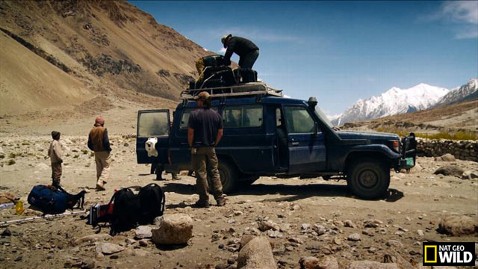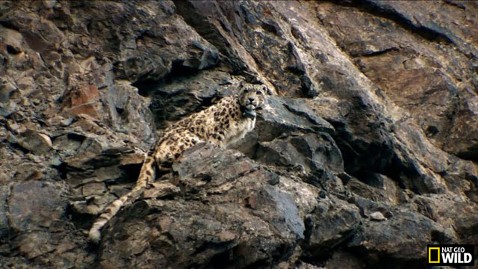Tracking the Elusive Snow Leopard of Afghanistan
By TJ WINICK and MARY COMPTON
In Afghanistan, one of the most dangerous places in the world, Boone Smith is on a mission.
Not for the military, but for wildlife organizations that want to track down the most elusive big cat on the planet: The snow leopard of Afghanistan.
"This was my Holy Grail for animals I wanted to catch," he said.
The Wildlife Conservation Society (WCS) and USAID challenged Smith, a fourth-generation big-cat trapper from Idaho, to capture and collar a snow leopard in Afghanistan in just 20 days.
"They're borderline mythical, legendary," Smith said. "If you can't look at a snow leopard and appreciate it for what it is and the terrain it survives in, you're missing something."
It's estimated that only 100 to 200 snow leopards are left in Afghanistan and that only 2,000 are left in the entire world. Poachers target these highly-endangered predators for their pelts and farmers will kill them for attacking their livestock. Wildlife experts want to find and collect more data on the big cat's movements to keep them from going extinct and to help Afghan villagers protect their farm animals.
"If they can't manage that land… and the wildlife and the resources that are found there, they can't survive," said Peter Zahler, the assistant director of WCS-Asia. "If they can't survive, you can never have sustainability and stability in a country like Afghanistan."

Credit: Nat Geo WILD
Smith traveled to the Wakhan Corridor, a mountainous border region in Northeastern Afghanistan - snow leopard country. His journey, in a film titled the "Snow Leopard of Afghanistan," will be featured as part of Big Cat Week on Nat Geo WILD beginning on Sunday, Dec. 9.
Among those on his experienced team are a tracker named Hussain Ali and fellow trapper John Goodrich. The team set up humane traps with transmitters to alert them when an animal was caught.
"Trapping is a game of odds," Smith said. "We're trying to predict the exact spot a cat would put his foot."
In the dead of night, after waiting only six hours, the team got a signal from the trap. They had caught a snow leopard.
Once the cat was hit with a tranquilizer dart, it was a race against time. The team only had one hour to complete a full exam of the animal and attach a satellite collar, which will collect valuable data and then fall off after 13 months.
"We feel a responsibility for an animal we've collared," Smith said. "We've taken some liberties with it, obviously, and we're justifying that because of what we're going to gain back in the big picture of conservation."

Credit: Nat Geo WILD
Over the next few days, Smith and his crew saw the data sent from the collar, tracking the animal's movements, which has helped notify villagers of when the big cats are approaching.
In a country where 80 percent of people live off the land, understanding the snow leopard means understanding a volatile ecosystem, one of the keys to rebuilding Afghanistan.